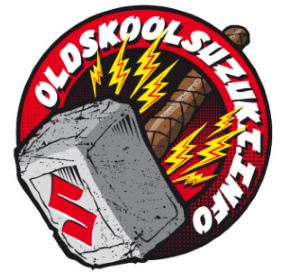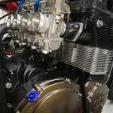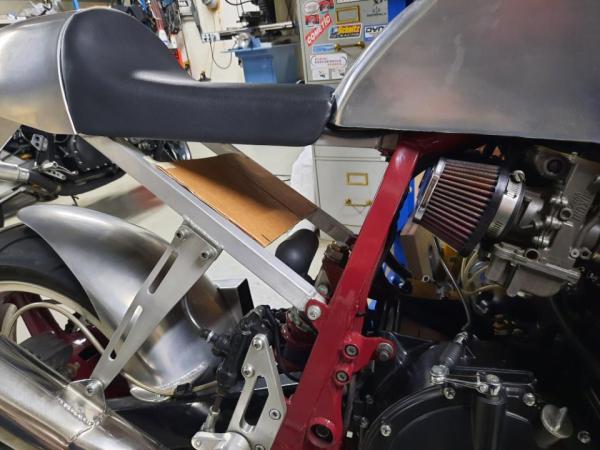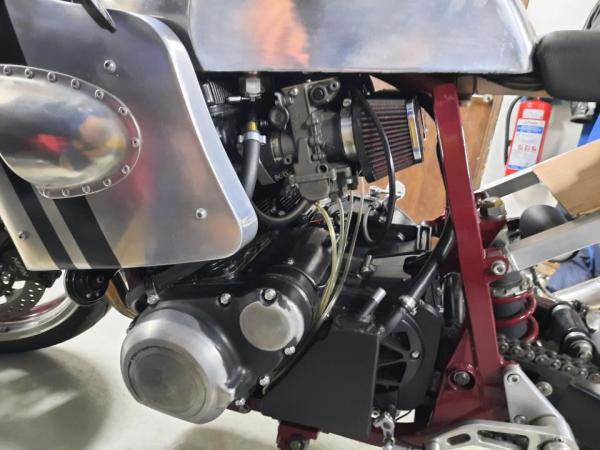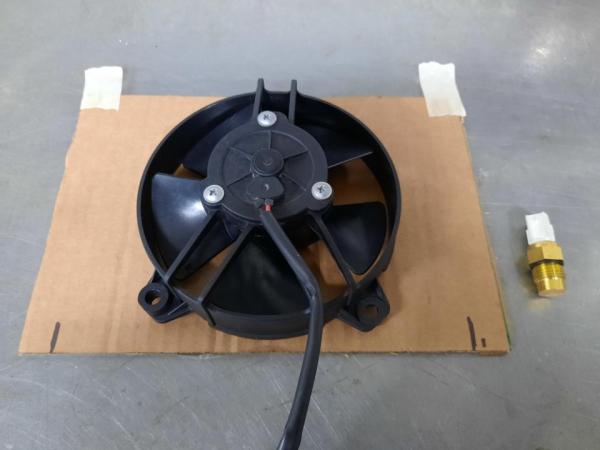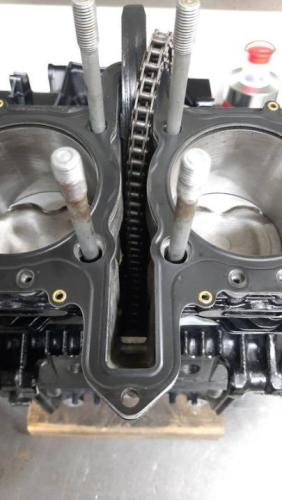-
Posts
560 -
Joined
-
Last visited
Reputation
1,713 ExcellentPersonal Information
-
Location
Finland
Recent Profile Visitors
2,505 profile views
-
EFE 1135 cylider block is better for resleeving. It's stronger = more material. Bigger sleeves need o-ring in the bottom end or sealer to stop the engine oil going between the sleeves and block.
-
Wix 33033 is paper filter in metal shell. I´ve been using that filter on my supercharged EFE on the fuel pump inlet line. No issues with E85 fuel or normal fuel.
-
My plan is to install 12 row cylinder head oil cooler on the subframe under the seat. It´s not the best place for air flow but it will get 130mm fan below. Fan will be controlled by 92C thermal switch on the cooler inlet side and relay.
-
I have started thinking about adding one more cooler with the fan in the subframe. Optimal size would be 220 - 250mm width and 170mm hight. I just haven´t find that size anywhere yet. Engine is 1360 cc and it´s creating a lot of heat.
-
Cooler will be inside the front fairing. I will make enough holes to the fairing and seal the cooler against the fairing. Fairing itself creats slight underpressure so it might not be so bad place for cooler anyway. Thermostat starts opening about +75C and is fully open at +85C.
-
What is the oil cooled 1100cc engine´s cooling oil pump flow cc/engine revolution? Is there any reason not to put oil cooler on top end cooling line? I have GSX engine with R cylinder block and dot head. Engine have a extra oil pump for cooling. Both pumps are on the same drive shaft and have a similar internals. Each pumps capacity approximately 4,5cc/engine revolution. Oil cooler is from Bandit 1200 and oil is flowing through thermostat to the cooler. Why I asking these questions is when I look in to the dot head intake ports, they are slightly yellow like gasoline has bunrt in to the port walls. That phenomen I haven´t seen on air cooled engines. Now I have started thinking to add small (90 x 200mm) oil cooler on to the head cooling line behind the front fairing.
-
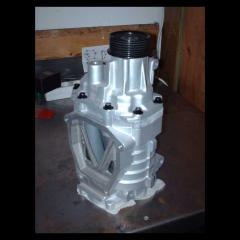
RS Carbs… generally work straight out of the box?
Blower1 replied to Brians 7/12's topic in Oil Cooled
I have RS38s on my 1360cc GSX with dot head. All the other parts as from the box except the one step leaner needles and smaller main jets. -

I never thought I would have to start one of these threads
Blower1 replied to george 1100's topic in Oil Cooled
I am following this with great interest. I had the same problems on the GSX engine with cylinder no.2. I changed carburetors, coils, plugs, coil wires, carburetors, ignition unit, but no help. I haven´t opened the cylinder head yet, because the compressions were ok. When I changed to another engine, the problems disappeared. -
According to the GSX manual, the clearance is 0.000-0.012 mm when new. When building a forced induction engine, I would say that at least 0.010mm,
-
Are those front center stud o-rings mandatory or replaceable with standard o-rings without blocking the cooling oil return to the crankcase? I ordered o-rings from local Suzuki shop and get 17mm o-rings instead of 15mm, which is the right size.
-
Old boost calculation formula: (boost (bar) x compression ratio) + compression ratio = 16 or less is safe. Above 16 needs intercooler and/or lower compression ratio.
-
I had 11:1 CR on my supercharged 1327cc EFE and E85 & flexfuel. The boost was 0.8 bar and water injection in to the supercharger. Now it´s 10:1CR 1360cc and run mostly with 98 gasoline and same boost as before and water injection. Both fuels working fine, but engine feels a bit crispier with 98 gasoline than with E85. Engine runs cooler with E85.
-
It was audible on idle too. If you going to lift the cylinder head, check that head gasket not cover the cylinder bores. If it covers, piston can "kiss" the gasket edge in the tdc. That can also be reason for piston slap. I had once head gasket where one cylinder hole was 1mm offset.
-
It was not so loud. It was audible up to highway speeds. The sound was softer than in connecting rod big end bearing damage. The sound disappeared for a while when the engine was loaded more heavily ( the pistons expanded more than normal).
-
Piston slap? It not sound so metallic and dissappears when engine have more load. My first "big bore" cylinder block did that because the piston to cylinder wall clearance was slightly over 0,10 mm.
